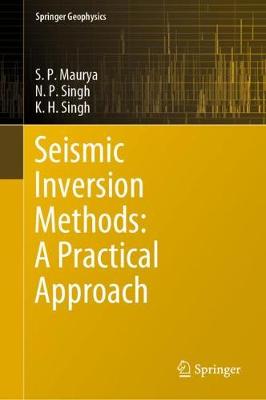Springer Geophysics
1 total work
Seismic Inversion Methods: A Practical Approach
by S. P. Maurya, N. P. Singh, and K. H. Singh
Published 29 May 2020
This book introduces readers to seismic inversion methods and their application to both synthetic and real seismic data sets. Seismic inversion methods are routinely used to estimate attributes like P-impedance, S-impedance, density, the ratio of P-wave and S-wave velocities and elastic impedances from seismic and well log data. These attributes help to understand lithology and fluid contents in the subsurface. There are several seismic inversion methods available, but their application and results differ considerably, which can lead to confusion. This book explains all popular inversion methods, discusses their mathematical backgrounds, and demonstrates their capacity to extract information from seismic reflection data. The types covered include model-based inversion, colored inversion, sparse spike inversion, band-limited inversion, simultaneous inversion, elastic impedance inversion and geostatistical inversion, which includes single-attribute analysis, multi-attribute analysis, probabilistic neural networks and multi-layer feed-forward neural networks. In addition, the book describes local and global optimization methods and their application to seismic reflection data. Given its multidisciplinary, integrated and practical approach, the book offers a valuable tool for students and young professionals, especially those affiliated with oil companies.
